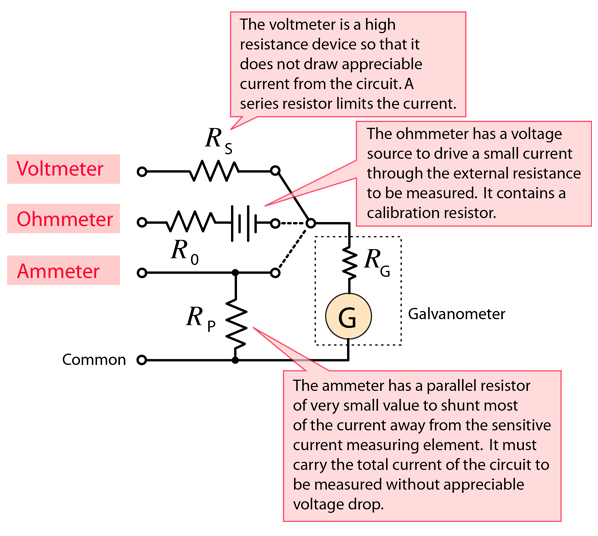Ammeter
An ammeter is an instrument for measuring the electric current in amperes in a branch of an electric circuit. It must be placed in series with the measured branch, and must have very low resistance to avoid significant alteration of the current it is to measure. By contrast, an voltmeter must be connected in parallel. The analogy with an in-line flowmeter in a water circuit can help visualize why an ammeter must have a low resistance, and why connecting an ammeter in parallel can damage the meter. Modern solid-state meters have digital readouts, but the principles of operation can be better appreciated by examining the older moving coil meters based on galvanometer sensors.

|
Index
DC Circuits |




